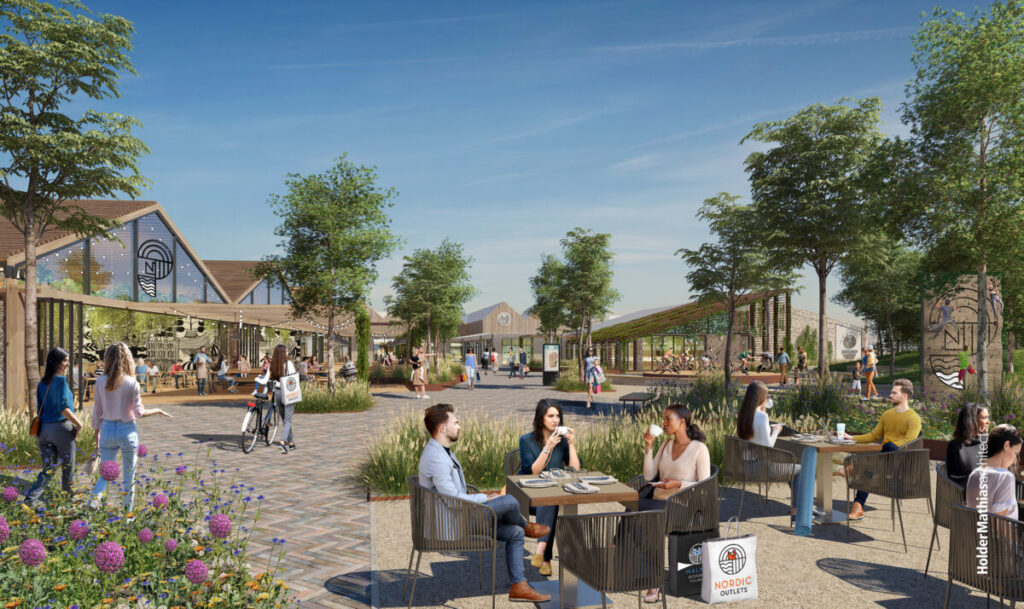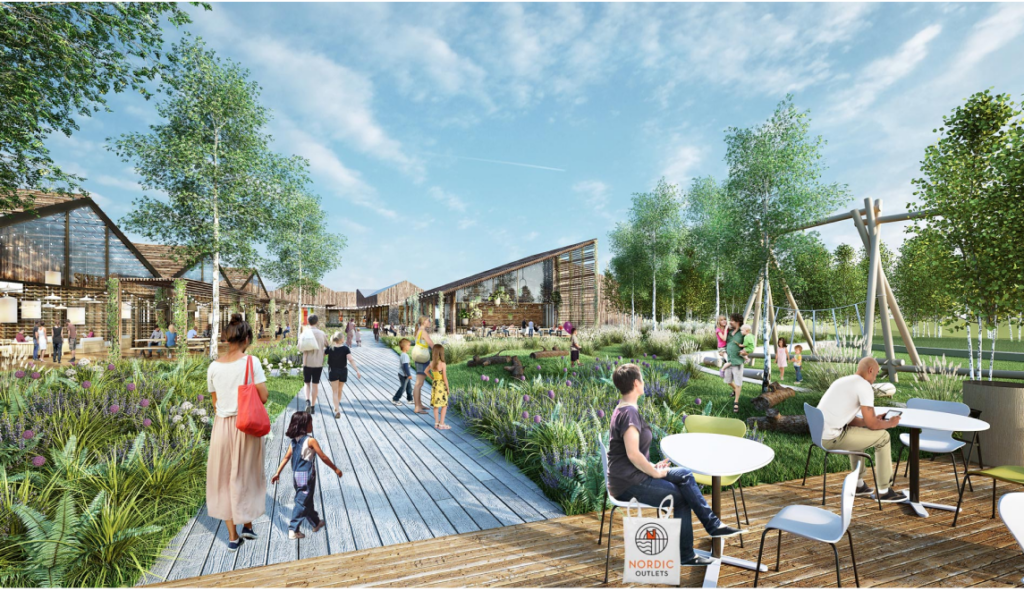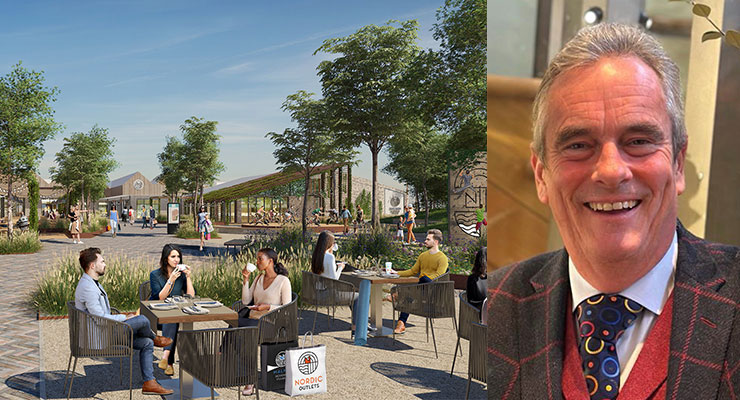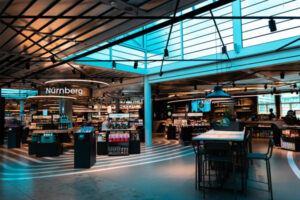BY GILES MEMBREY
On one side of the argument, proponents champion the idea that leisure facilities enhance the shopping experience and attract a diverse clientele. On the other side, critics argue that leisure amenities may detract from the primary retail focus, increase costs, and pose logistical challenges.
The arguments for …
Enhanced shopping experiences: One of the most compelling arguments for including leisure facilities at a new outlet center is the potential to enhance the shopping experience. These amenities, which can range from cinemas and bowling alleys to indoor playgrounds, create a comprehensive and immersive experience for shoppers. Families, in particular, find these attractions appealing, as they provide entertainment options that make the visit more enjoyable and prolonged. When visitors have the opportunity to engage in leisure activities alongside their shopping, they are more likely to view the outlet center as a destination rather than merely a shopping venue.
Increased foot traffic: Leisure facilities act as magnets, drawing more visitors to outlet centers. This increased foot traffic not only benefits the leisure amenities, but can significantly boost sales at the retail stores within the outlets. The synergy between retail and leisure can create a positive feedback loop – more visitors leads to higher sales, which, in turn, drives further investments in both retail and leisure offerings, and that can lead to increased revenue for the entire development.

Diversification of activities: Another advantage of incorporating leisure facilities is the diversification of activities available to visitors. This diversification can transform the outlet center into a one-stop destination for shopping, entertainment, and dining, making it an appealing option for consumers seeking a day out. This is especially enticing for groups, where members have varying preferences for how they spend their day. By offering a blend of shopping, dining, and leisure activities, the outlet center caters to a wide range of interests and becomes a versatile and inclusive destination.
The arguments against…
Distraction from core retail focus: Critics argue that incorporating leisure facilities may divert attention away from the primary purpose of the outlet center – shopping for value-priced brand-name goods. This shift in focus could potentially dilute the unique selling proposition of the outlet, which is to provide a retail haven for value conscious consumers. Shoppers might become inclined to spend more time engaged in leisure activities rather than exploring the retail offerings, thereby undermining the very essence of an outlet center.
Higher costs and maintenance: Building and maintaining leisure facilities can be expensive. Critics suggest that the funds allocated for these amenities could be better utilized to improve the retail infrastructure itself. That might involve enhancing store offerings, maintaining cleanliness, and improving both parking facilities and access to public transport. By channeling resources into retail-centric improvements, outlet centers can create an environment that more effectively serves their core purpose.

Congestion and space constraints: Some opponents of leisure facilities within outlet centers express concerns about overcrowding and congestion. Additionally, dedicating space to such amenities might limit the expansion of retail offerings, potentially leading to missed revenue opportunities. Outlet centers, especially those located in high-demand areas, may find it challenging to allocate space for leisure development without compromising their retail capacity and car parking constraints. Furthermore, dedicating space to leisure facilities and associated parking could restrict the room available should there be a desire to
expand the retail outlet through additional phases. Local business competition: Out-of-town retail centers often compete with local businesses, and critics argue that introducing leisure facilities could further exacerbate this competition. Local entertainment businesses may find it challenging to compete with the allure of an outlet center’s integrated leisure amenities. That can impact the viability of nearby entertainment businesses, potentially leading to economic repercussions for the local community.
In the overall debate, it is essential to recognize that the two can be mutually beneficial. One need only look at successful examples, such as Cheshire Oaks, where the outlet center and leisure facilities are adjacent, allowing visitors to easily move between shopping and leisure activities. However, striking the right balance between retail and leisure can only be achieved if careful consideration is given to the preferences of the target audience and the local market dynamics surrounding the proposed outlet development. It is crucial to conduct comprehensive market research to understand the specific needs and desires of their potential customers. That includes analyzing the demographics of the area, consumer preferences, and the competitive landscape. By tailoring the inclusion of leisure facilities to the characteristics of the target audience, developers might be able to create a harmonious blend of retail and leisure that maximizes the center’s appeal.
A thorough feasibility study should be conducted to assess the financial viability of incorporating leisure amenities. That includes a cost-benefit analysis that weighs the potential revenue generated by leisure facilities against the initial construction and ongoing maintenance costs. In some cases, it may be more prudent to focus on enhancing the retail infrastructure and shopping experience, rather than diverting resources to leisure offerings. Additionally, careful urban planning and efficient use of space can mitigate concerns related to congestion and space constraints. Strategic layout design and adequate parking solutions can help manage visitor flow and ensure a positive experience.
As you can see, the question of whether leisure facilities should be part of a new outlet center is a complex one, with valid arguments on both sides of the debate. While leisure facilities can undoubtedly enhance the shopping experience, attract more visitors, and diversify activities, they also present challenges related to maintaining the core retail focus, managing costs, addressing congestion, and competing with local businesses. Ultimately, the decision to incorporate leisure facilities into a new outlet center should be based on a careful and thorough assessment of the specific context and objectives of the development. It requires a deep understanding of the target audience, local market dynamics, and financial feasibility. Striking the right balance between retail and leisure is possible, but it demands meticulous planning and a commitment to creating a destination that fulfils the desires of both shoppers and the local community.

Giles Membrey
Giles Membrey is Managing Director of Rioja Estates Ltd







